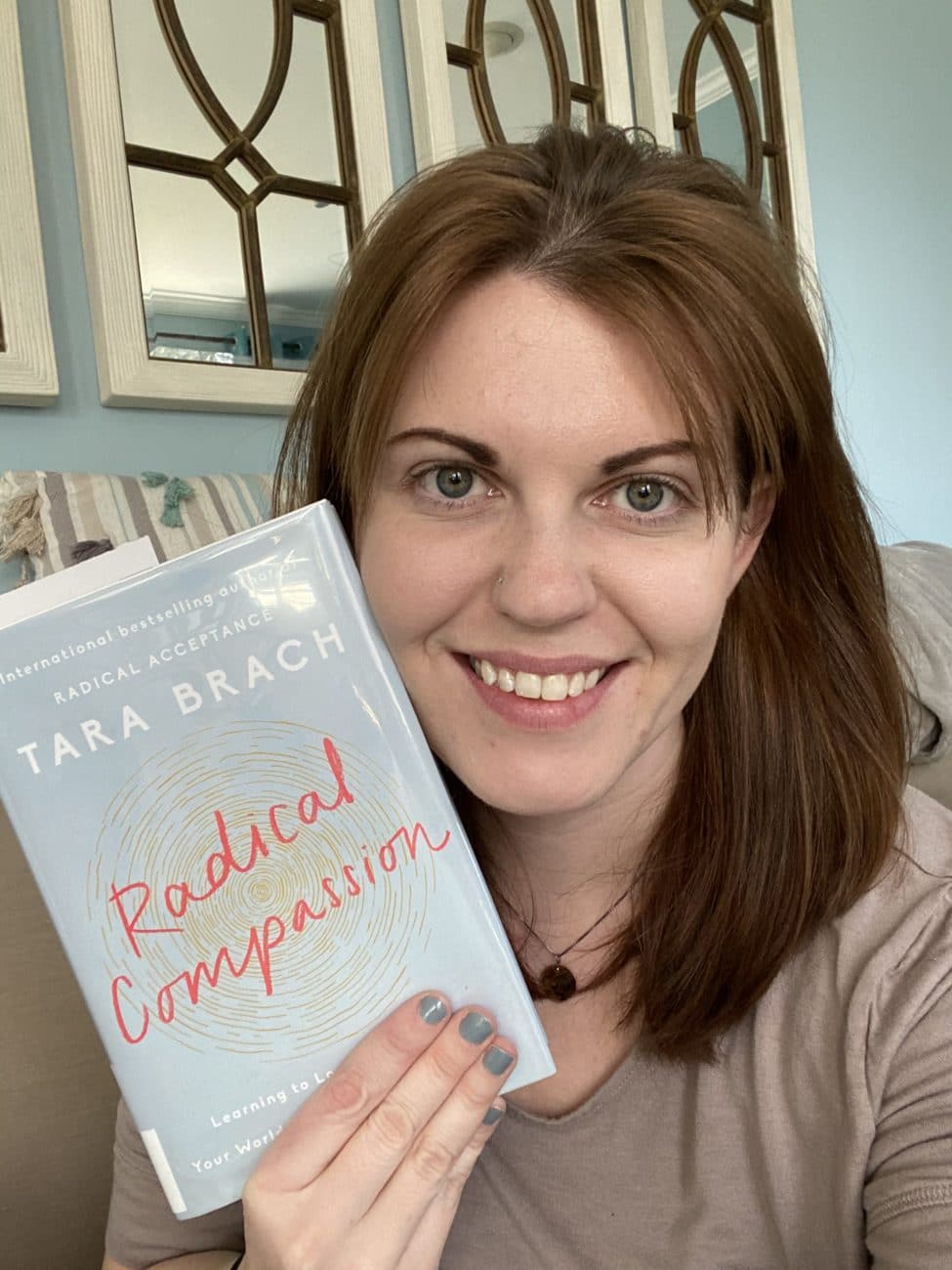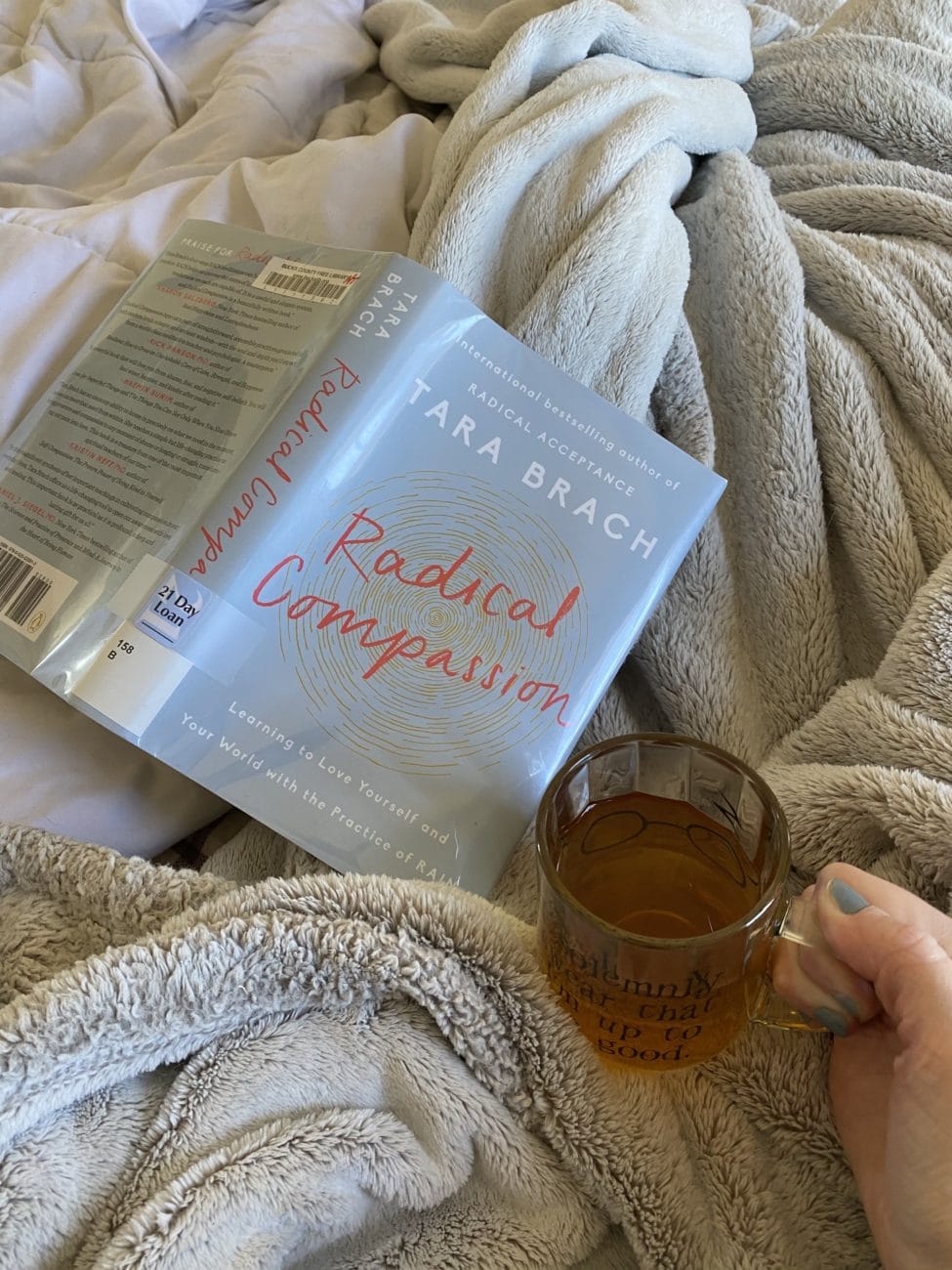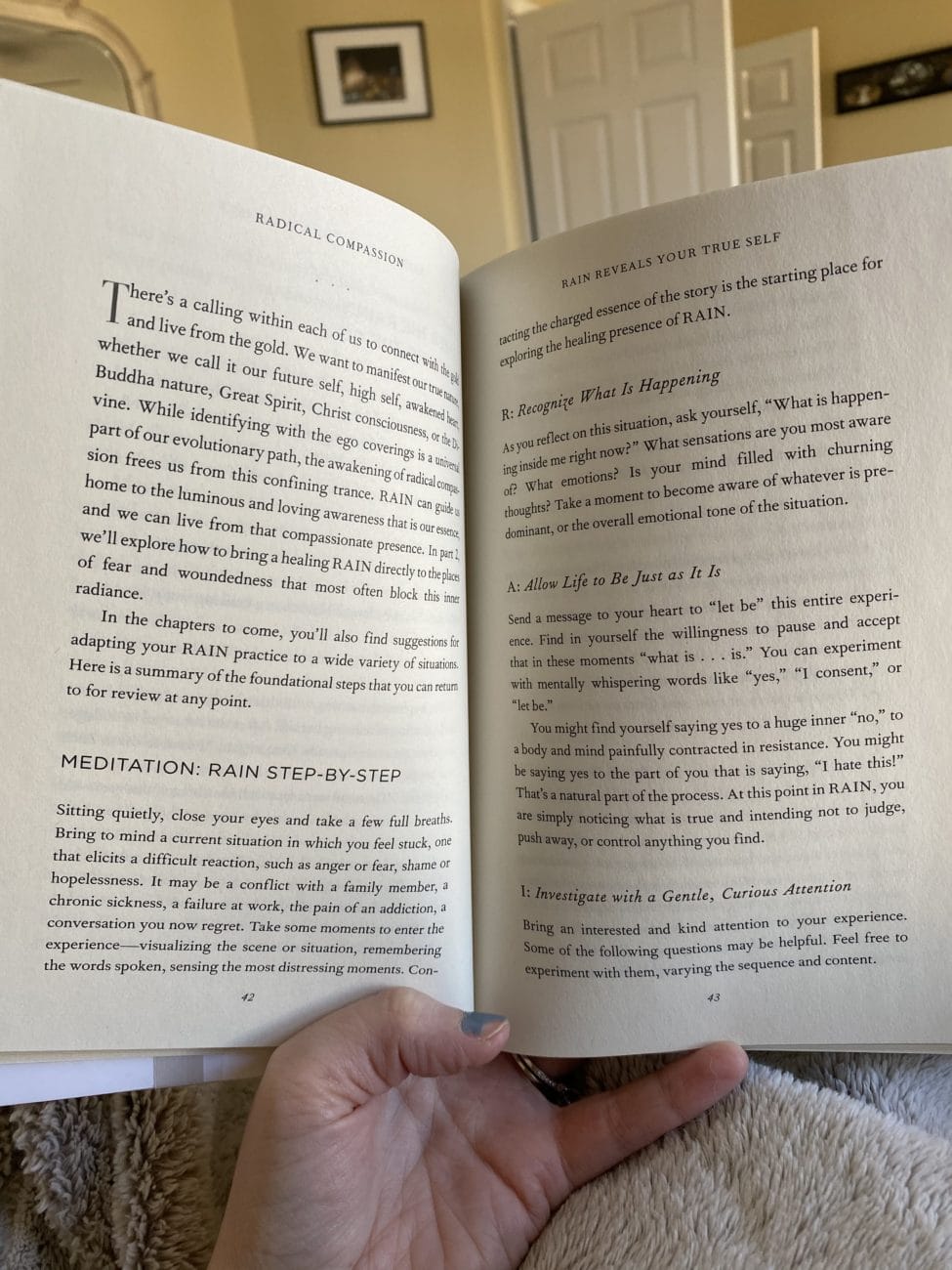
My anxiety and panic attacks began when I was in college. I don’t know if it was from the pressure of my schoolwork, of graduating without a job, or what, but I began to find it difficult to drive or leave any type of “safe space” without hyperventilating. I spent years gathering up information, trying to understand what was happening to me. Self-help books and online forums became my lifelines and over the years I’ve gradually learned to work through this disorder using mindfulness and a slew of cute little acronyms.
This is why when I began reading Tara Brach’s Radical Compassion, Learning to Love Yourself and Your World with the Practice of Rain I came in with the belief that I would be looking at it through the lens of my anxiety and panic disorder.
Radical Compassion is about using mindfulness tools to teach yourself self-compassion and kindness. She does this by introducing us to the acronym RAIN.
“Simply put, RAIN awakens the mindfulness and compassion, applies them to the places where we are stuck, and untangles emotional suffering,” the author writes.
Its goal is to cut through the dense fog of our everyday lives, the trance that we find ourselves in when we begin to worry incessantly. When we’re caught in the thick of daily life, when we’re stressed, anxious, angry, terrified or numb, we can’t be present with ourselves and the world around us. RAIN is a way to cut out all of that, to dispel self-doubt so we can live our best lives.
I immediately thought this was going to be a repeat of so many things I’ve read before. And while, in a way it echoed a lot of what I know about allowing and accepting your own fears and anxieties, what’s unique about her approach is its focus on self-love, not on the fear or anxiety itself. The author wants us to move beyond that so that we can back to living in the present. We do this by acknowledging our fears, allowing them to be there and being ok with that and then by showing ourselves compassion for the way these fears make us feel so that we can move beyond it.

Trying RAIN
The first step of RAIN is simply to Recognize ( R ) what is going on inside of you. I took a look inward and asked myself what I’ve been struggling with, or overwhelmed by recently. Since having my son last year, actually it’s probably since I got pregnant, I’ve been having this sort of identity crisis over who I am. Not about who I am now that I am a parent, but who I am now that I’ve put the brakes on a career and decided to put raising my son first. As I recognize that I notice the emotions that come up: feelings of inadequacy, laziness, selfishness, restlessness, anxiousness, the list goes on.
The second step is to Allow (A) what is happening by breathing and letting be. I closed my eyes and allowed myself to just be, breathing in deeply all of the things I love about being a mom and letting myself sit with the uncomfortable parts too. I just let it all float there and tried not to push any of it away. The author tells us it’s important to sit with our discomfort.
“We inevitably encounter everything we’ve been avoiding – the loneliness, hurts and fears. And yet if we practice regularly, we discover that we can maintain a balanced, openhearted presence in the midst of the storm.”
Next is to Investigate (I) what feels the most difficult. For me, this step initially seemed like a repeat of Recognize but the author asks yourself to go beyond just naming the emotions you’re experiencing, she asks you to identify what hurts the most about them, what ultimately scares you the most. I’m scared that I’m not doing what society says I’m supposed to do. I’m supposed to have the career and the family, to do it all. I’m afraid that this is me settling because anxiety and panic stopped me from pursuing the career I thought I wanted, the one that required traveling. I’m scared of what I’m missing because of the choices I’ve already made.
Lastly, the N stands for Nurturing. This is the part where you send a gentle message inward, directly to your anxious part. The author says it helps if you imagine envisioning your future self as a wise and nurturing presence. I could see myself very clearly, in about 10-15 years, standing in my kitchen, surrounded by my children. I’m happy. I’m in my own domain. I’m taking them to soccer practice, making their lunches, planning summer break trips. It all sounds so boringly suburban but I am unbelievably happy. I’m saying to myself, “it’s ok, every decision has lead you right where you were supposed to be.” My future self is confident, there’s nothing she would have done differently. She is an anchor.
The author teaches us several more techniques, guided meditations and reflections, in addition to sharing some personal stories from her students. Overall I felt like I really connected to the text. If I had read this book several years ago, it would have struck me differently and I think that’s what I love about self-help books. One day, I’ll be able to reread this and it will help me deal with something else I’m dealing with.

RAIN allowed me to get out of my own head, to confront some of my biggest anxieties, acknowledge them and then dispel them so that I can continue living in the present. It helped quiet that ever-doubting inner dialogue in my head that tries to cover “the gold” underneath my negative self-beliefs.
Christine Wolkin is a freelance writer and writes for our blog. Learn more about our studio at Allebachphotography.com or by texting 610.539.6920.
